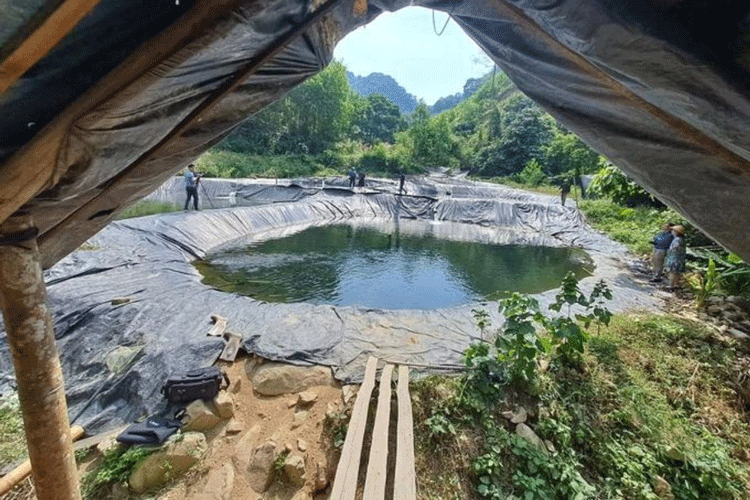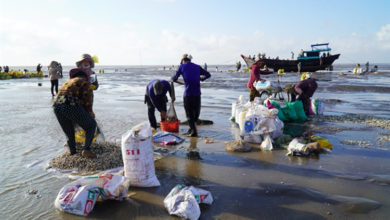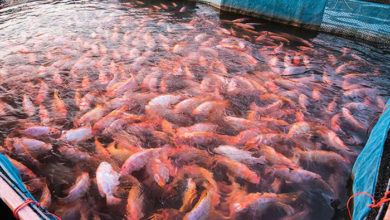Binh Dinh: Expanding Semi-Biofloc technology in whiteleg shrimp farming
This technology helps minimize disease, cut production costs, control antibiotic residues in shrimp, and significantly boost both product quality and income compared to traditional methods.
Semi-Biofloc technology has been increasingly adopted in whiteleg shrimp farming across households in Binh Dinh province recently. To use Semi-Biofloc technology, farmers need to set up appropriate facilities, including tarped and covered ponds, water treatment systems, drying fans, and a two-phase shrimp farming process. Shrimp fry, after 25–30 days of rearing and reaching a size of 600–800 shrimp/kg, are transferred to grow-out ponds with a density of 180–200 shrimp/m². During farming, farmers use molasses fermentation to enhance feed adhesion and culture floc to supply to the ponds.
In 2021 and 2022, the Binh Dinh Agricultural Extension Center, working with local authorities, showcased several models of whiteleg shrimp farming using Semi-Biofloc technology. These models proved to be economically effective, improving environmental conditions and social welfare. Implemented on a scale of 1,500 m² per site in Phu Cat and Phu My districts and Hoai Nhon town, the models showed good results after three months. Shrimp grew well, with no disease, a survival rate of 87%, an average harvest size of 70 shrimp/kg, a yield of 24.8 tons/ha, and an average profit of 171 million VND per 1,500 m² pond.
Engineer Nguyen Khac Tung Tien, Deputy Head of the Aquaculture Extension Department (Agricultural Extension Center), noted that Semi-Biofloc technology is relatively easy to implement. It doesn’t require large pond areas but does need tarped nursery and grow-out ponds, along with a water and bottom oxygenation system (the bottom oxygenation must operate continuously).
This new technology can reduce disease, limit or eliminate antibiotic use, lower production costs, and enhance product quality and economic efficiency, leading to a significant increase in income compared to traditional methods.
In 2024, the Agricultural Extension Center will continue to expand this model in Cat Minh commune (Phu Cat district), My Thanh commune (Phu My district), and Phuoc Hoa commune (Tuy Phuoc district) with a scale of 1,000 m² per site. Participants will receive 50% support for fry, feed, and essential materials, as well as technical training throughout the farming process.
Semi-Biofloc technology offers considerable benefits to shrimp farmers. It can double yields compared to traditional methods (with stocking densities of 180–200 shrimp/m² versus 100–150 shrimp/m² in conventional farming, and even lower densities in extensive farming). Input costs are reduced by 10–15% (due to lower expenses for disease-prevention antibiotics and feed losses). It also decreases groundwater use by stabilizing water quality with microalgae. The technology is relatively easy to adopt and master, especially in the initial stages where farmers should focus on pond management, water monitoring, and effective use of molasses fermentation and floc cultivation techniques.
VFM






